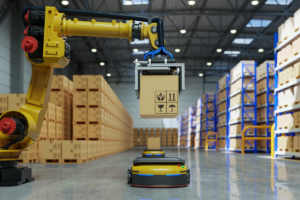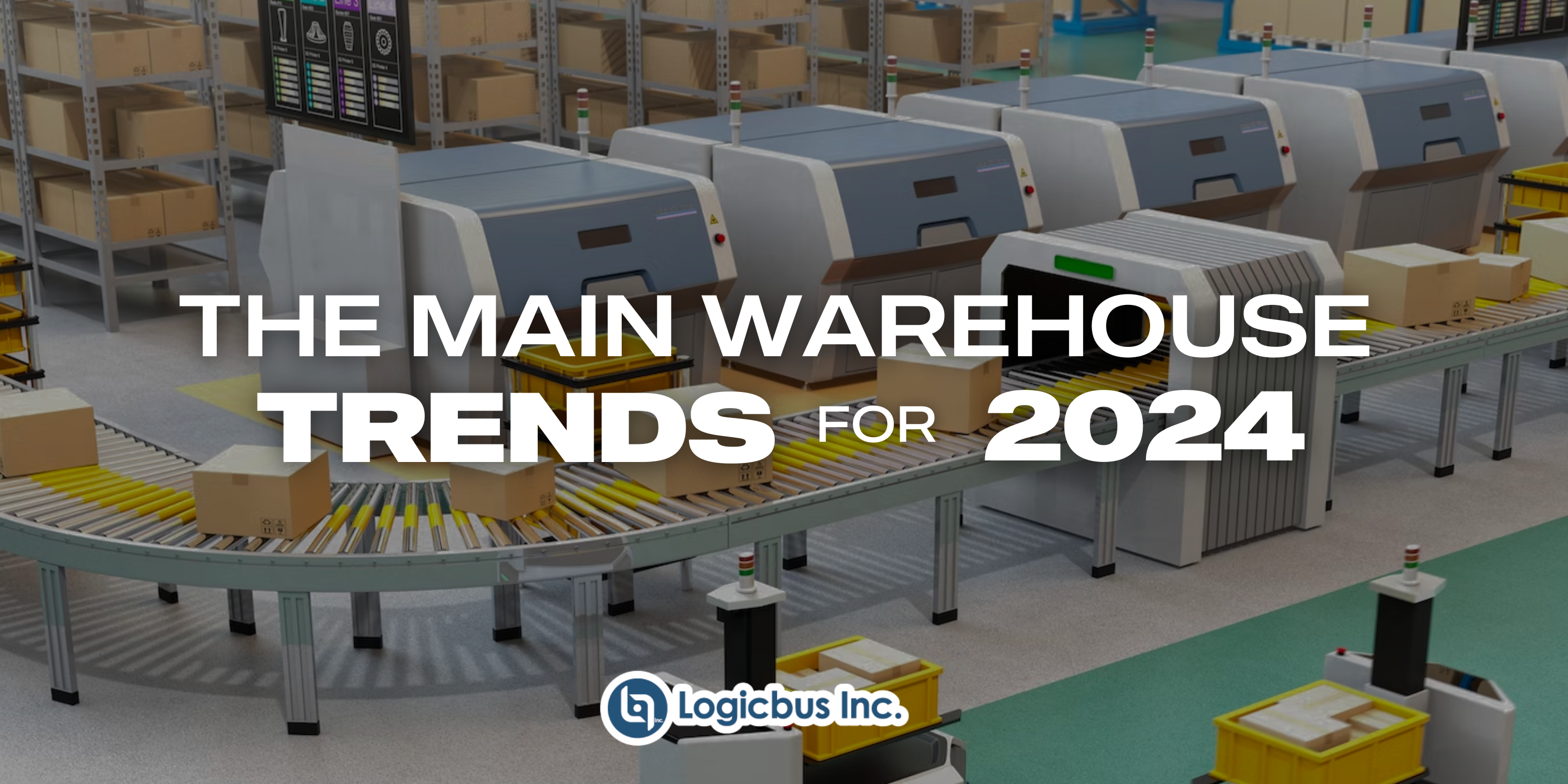The global warehouse management market was valued at 3.4 billion dollars in 2022 and is expected to expand at a Compound Annual Growth Rate (CAGR) of 19 percent from 2023 to 2030. Growing economies worldwide have propelled various sectors, including healthcare, third-party logistics (3PL/4PL), and retail, to achieve highly efficient operations to increase production and meet consumer demand.
Looking ahead to 2024, here are the most significant trends on the horizon for warehouse management:
More and Better Warehouses:
The surge in e-commerce, accelerated by the COVID-19 pandemic, has heralded an unprecedented demand for sophisticated warehouses and distribution centers. Customer expectations when shopping online have evolved, with consumers expecting more product options and faster deliveries. Therefore, strategically located and state-of-the-art warehouses are needed to meet these expectations, further driving warehouse construction.

Automation to Address Labor Shortages:
Global labor shortages have become a post-pandemic issue affecting the production of most industries. The incorporation of Warehouse Management Systems (WMS) can increase worker productivity by standardizing workflows and integrating with automation (robots, sorters, Automated Storage and Retrieval Systems (AS/RS), goods-to-person systems, etc.). A WMS can reduce overall labor and operational costs while increasing productivity. However, there is a misconception that “machines” will take over and eliminate the human element. Instead, individuals with skills to make sense of collected data and continuously optimize new processes will be needed.

Artificial Intelligence (AI) and Machine Learning (ML):
Warehouses across all industries will increase their adoption of Artificial Intelligence (AI) and Machine Learning (ML) solutions. Emerging use cases for AI and ML are rapidly growing and have the potential to revolutionize warehouse operations. AI and ML algorithms provide actionable analytics to optimize operations, increase efficiency, reduce costs, and enhance customer satisfaction. AI can help companies make more informed decisions about their inventory, ensuring they have the right products in the right place at the right time. For example, AI can analyze data from various sources, such as sales data, customer demand, and supply chain data, to forecast future demand and make recommendations on inventory levels in each warehouse.
Immersive Technology:
Next-day or same-day product delivery is not only a result of warehouse management workflows and automation but also a key skill of warehouse staff. To maintain employee efficiency at the highest levels, warehouses will increase the integration of immersive technologies. Virtual reality enhances employee skills with immersive warehouse task training, while augmented reality simplifies the product search process by showing the optimal route to the item. Immersive reality technologies improve decision-making processes through visualizing operations.
Internet of Things (IoT):
The Internet of Things (IoT) is revolutionizing how companies manage their warehouses. IoT is a network of interconnected physical devices on the internet, allowing them to capture and transmit data. IoT devices provide warehouses with an unprecedented level of real-time data analytics. The benefits are enormous, offering not only an accurate method of inventory management but also increasing security, reducing costs and waste, enabling predictive equipment maintenance, and facilitating access to data for analytical purposes. IoT devices deployed in warehouses include radiofrequency scanners (RF), drones, radiofrequency identification (RFID) tags, robots, and autonomous forklifts.

Cloud Computing:
Cloud computing will make its mark in the coming months. A cloud-based WMS is warehouse management software implemented on a Software as a Service (SaaS) model. With a fully web-based interface, systems can be accessed from any device via an internet connection. This deployment model is rapidly surpassing the on-premise model, where the system is installed on a server hosted by the company itself. Some benefits of implementing a cloud-based WMS include lower initial costs, faster implementation, higher security, high scalability, always up-to-date without updates, and accessibility from anywhere.
These innovations, such as AI/ML, cloud, and automation, make it an exciting time to work in warehouse management. Companies that find ways to employ these innovations and align them with their business strategy will have a competitive advantage in 2024 and in the years to come.




sales@logicbus.com | support@logicbus.com | +1 619 616 7350 | Start conversation

